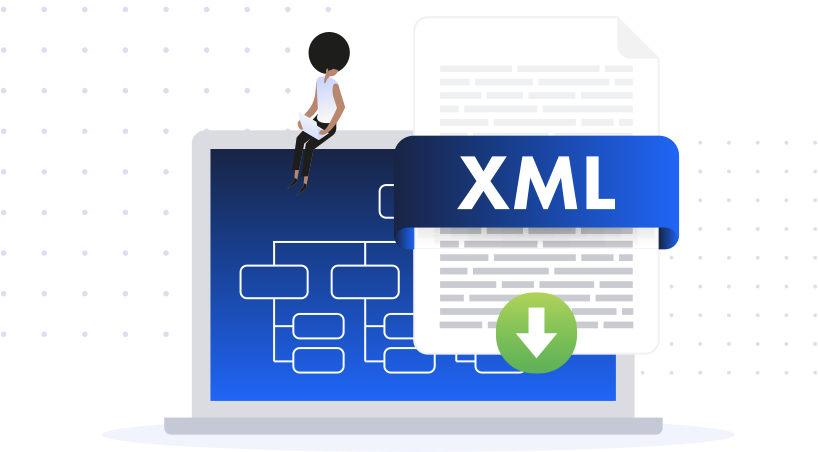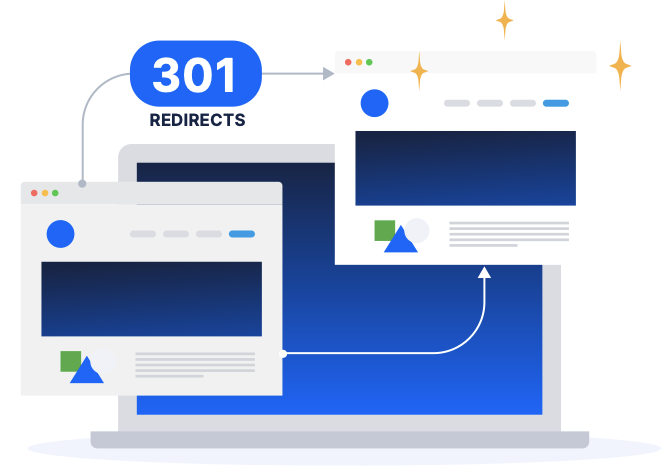Getting Your Website Found Online Requires SEO & Ongoing Marketing
A great website isn’t so great if no one visits it. This is why the first chapter is dedicated to getting found online.
This is where Search Engine Optimization (SEO) comes in. It is an absolute must-have to any website strategy, but it takes hard work and consistency when aiming for the top spot. There are two types of SEO to be mindful of — on-page SEO and off-site SEO.
On-page SEO refers to any measures that can be applied directly within your website in order to improve its position in the search rankings. Off-site SEO refers to actions taken outside of your website to impact your rankings within search engine results pages (SERPs).
These tips will help get you on your way to increasing your organic (non-paid) search engine rankings.
Keyword Optimization
One of the most important things about on-page SEO is placing your most important keywords within the content elements of your actual pages. These on-page elements include Headlines, Sub-headlines, Body Content, Image Tags, and Links. Oftentimes on-page SEO is referred to as “keyword density.”
It’s very common that businesses will do too little on-page optimization or too much (keyword stung). While it’s important to include your keyword as many times as necessary within a page, you don’t want to go overboard with it either. For keywords done right, here are some tips:
Pick a primary keyword for each page and focus on optimizing that page for that word. If you oversaturate a page with too many keywords on one page, the page will lose its importance and authority because search engines won’t have a clear idea of what the page is about. This is very common on homepages in particular, where too many keywords are used.
Place your primary keywords in your headline and sub-headline. These areas of content have greater weight to search engines.
Include your primary and secondary keywords in the body content but don’t use them out of context. Make sure they are relevant to the rest of your content.
Include the keywords in the file name of images (e.g. mykeyword.jpg) or use them in the ALT tag if it accurately describes the image.
Include the keywords in the page URL and keep the URL short and clean.
And lastly, write for humans first, search engines second. Always prepare your content for your audience and then look to optimize it for search. Content written in the other order won’t read naturally, and your visitors will recognize it.
Title & Meta Tags
While this may be the least sexy component of SEO, it is a definite must-have. A meta tag is a line of code that is contained in the background of a web page. Search engines look at meta tags to learn more about what the page is about.
Meta tags don’t quite have the level of SEO importance as they used to but are still very important. Back in the day, websites abused meta tags to increase their rankings by including far too many keywords. Now search engines are smarter and give more weight to inbound links and page content for ranking instead.
However, they still play an important role in an SEO strategy. Make sure to use these on all of your pages.
If you’re not a web guru, most website editors and content management systems enable you to easily edit meta tags without coding knowledge. If you don’t have an editor, you can simply open a web page file (ending in .htm, .html, .asp, or .php) in Notepad or a plain text editor, and the meta tags will be found near the top of the document.
Here is an example of what meta tags look like in an HTML document:
- Title: The title of the page is seen at the top of a web browser, also the main headline displayed in search engine results.
- Description: A concise description of the page.
- Keywords: Words that identify what the page is about. Keep to less than 7 keywords per page. Keywords in meta tags are not visible in the search engine results like Title and Description.

XML Sitemaps
The general incentive behind an XML sitemap is to help search engine crawlers (or “spiders”) sift through your pages more efficiently. An XML sitemap is simply an .xml file containing a listing of all your pages and when they were updated. It’s a lot like a subway map. It shows the structure of your website and where your pages reside.
Creating a sitemap is easy. You can find sitemap generators online that will create the .xml file for you. Once you get the .xml file, simply upload it to the root directory of your website (e.g. www. website.com/sitemap.xml).
If your website is updated regularly, make it a good practice to update your .xml file at least once a month so search engines have the freshest data.
Adding an XML sitemap is a component that is commonly overlooked, while it may not be the deciding factor in improving your Search Engine.

301 Redirects
We’ve all experienced a time when we clicked on a website link that ended up being broken. Typically you’ll see a “404 message” or “Page Not Found.” A lot of times, this is caused when a page is moved to a new URL, and the old link hasn’t been directed to the new page.
Think about the lost opportunity when your customers or potential buyers want information they can’t locate. If you choose to move a page on your website, make certain that you use a permanent 301 Redirect, a method used to change an old URL to a new one.
In addition to keeping visitors happy when navigating your website, permanent 301 redirects are also important for SEO. When a user can’t find a new page, nor can a search engine, you’ll lose any SEO status the old page once had. To keep the SEO juice following to new pages, set up a 301 redirect for pages that have been moved, so search engines know where to find it.

Blogging
Blogging is without a doubt one of the most important assets to any marketing strategy, and it’s a perfect complement to your website.
Here are some reasons why you really need a blog:
- It creates fresh content and more pages of content, which is great for SEO.
- It helps establish you as an industry authority and thought leader.
- It helps drive more traffic and leads back to your website.
- It’s a great channel to converse and engage with your audience and customers.
- It’s a great way to get valuable inbound links!
Blogging isn’t as difficult as you think. There are plenty of blogging tools you can use to get started. If the ability to create content regularly is your main concern, there are blog writing services like ContentWriters, Audience Ops or Pronto Marketing that will help you get started.

Building Inbound Links
Every website on the internet has the goal of reaching the #1 position in search engines, but because there is only one top spot per keyword phrase, not everyone can make it. So what gets a first-place ranking? Off-page search engine optimization (SEO) is the most important factor in increasing your ranking results.
Off-Page SEO is about building inbound links, essentially getting other quality websites to link back to you. Search engines call this authority or “link juice.” The more inbound links you have, the more important your site must be, thus the higher you’ll rank.
Link building isn’t easy since adding links to other websites is sometimes out of your control.
Here are some tips to building inbound links:
Create high-quality, educational or entertaining content. If people like your content, they will naturally want to link to it
Submit your website to online directories. This is an easy way to start.
Write guest posts for other blogs. This is a win-win for both parties. People will want extra (quality) content from others, and in exchange, it’s a great way to build inbound links.
Research link building opportunities with other websites, but always check the authority of the websites that you are trying to get links from. There are many tools online that allow you to check domain or page authority, including HubSpot’s link grader tool and MOZ.
And don’t borrow, beg, barter, bribe or buy links.
For more hands-on help from the Pronto team, book a free meeting with a Pronto advisor.
©2022 Pronto Marketing All Rights Reserved.